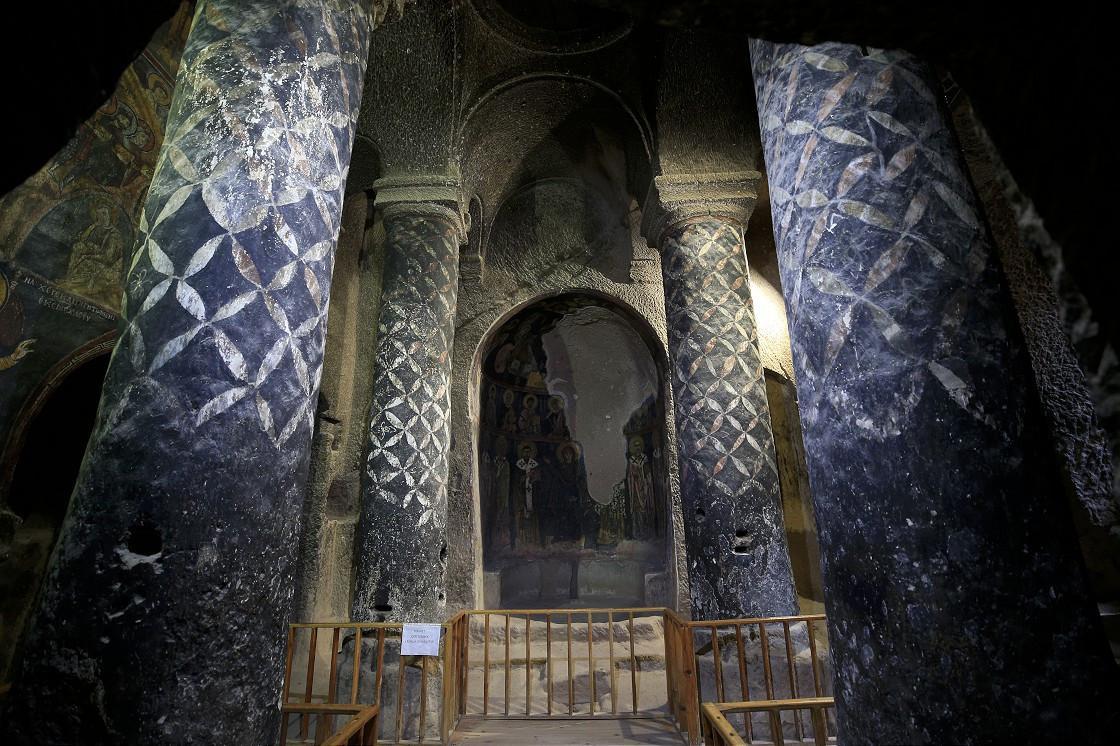
Home to many civilizations such as the Hittites, Romans, Seljuks, Karamanoğlu Principality and Ottomans, the Central Anatolian province of Niğde awaits its visitors with its churches, ruins, mosques, mountains, lakes and natural beauties.
The crater lakes Karagöl and Çiniligöl, which are approximately 2,650 meters high in the Bolkar Mountains in Ulukışla district, draw attention with their endemic plant and animal species. In addition to its natural beauties, tourists can also see the Taurus frog (Rana holtzi), also known as the “silent frog,” which is protected by the Bern Convention.
Aladağlar Mount in Çamardı district, with seven peaks above 3,500 meters, is among the important mountaineering centers. Demirkazık, one of the most important peaks of the region, hosts many amateur and professional mountaineers.
The Gümüşler Monastery, which is believed to have been built between the 8th century and the 12th century in the Gümüşler town of the center, has interior decorations, which are described as the best wall paintings of the Cappadocia region, rock-carved priest rooms, kitchen, storage cubes, a two-storey underground city and secret compartments, made to hide in emergency situations. The monastery also attracts attention with its “Smiling Virgin Mary” fresco, which is known to be the only example in Anatolia.
On the Alaaddin Hill in the city center, the shadow, which is like a “crowned woman’s head,” on the stone engraving on the upper part of the east-facing door of the historical Alaaddin Mosque, which was built by Zeyneddin Beşare in 1223, draws attention.
Speaking to the state-run Anadolu Agency, Niğde Governor Yılmaz Şimşek said that Niğde is the gateway to the Cappadocia region.
Şimşek stated that the city hosted many civilizations such as the Hittites, Romans, Seljuks, Karamanoğlu Principality and Ottomans, adding, “It is possible to see the works of these civilizations in and around Niğde. Gümüşler Monastery is one of the biggest and best-preserved monasteries of Cappadocia, dating back to the middle ages. It also stands out with the fresco the Smiling Virgin Mary. The Andaval Church, located in the Aktaş town, was built in the name of Helena, the mother of the Roman Emperor Constantine. The church, which is at the same age as the Hagia Sophia, is extremely important in terms of faith tourism.
Şimşek stated that works have been ongoing to bring the ancient city, which dates back to the late Hittite period Tabal Kingdom, located in Göllüdağ, 30 kilometers from the city center, into tourism.
Pointing out that the Niğde Castle, clock tower, Hüdavent Hatun Tomb and the covered bazaar that will be converted into a city museum are among the important works in the city center, Şimşek emphasized that it is also possible to visit the Roman Pool, the ancient city of the Tyana Kingdom and the aqueducts in the Bor district.
Stating that there are around 80 historical mosques, nearly 30 churches, caravanserais and fountains, and historical underground cities throughout the city, Şimşek said: “Niğde is actually an open air museum. Our aim is to unearth this richness in this open-air museum and to attract more tourists. This is a city that stands out with its natural beauties.”
“We have two crater lakes in the Bolkar Mountains, which are Çinili and Karagöl. This region stands out with its endemic plant and animal species. The Taurus frog [Rana holtzi] is an endemic animal species and lives only in these lakes. In the Çamardı district, there are Aladağlar and Demirkazık, which are known as the temple of world mountaineers. There are 30 peaks over 3,000 meters in this region. This is an important center for mountain and nature tourism.”
Şimşek also stated that the thermal spa in Çiftehan village of Ketençimen Plateau, which is 15 kilometers from the center, is one of the important values of the city, too.
Emphasizing that Niğde is an important city in terms of history, culture, mountains, nature, faith and thermal tourism, the governor said, “Niğde is a very important city in terms of both its historical riches and natural beauties, but many people are not aware of this. Those who came to Niğde and saw these beauties say, ‘We did not know Niğde was like this.’ Our aim is to introduce these beauties and riches to everyone and to get a bigger share of the tourism pie.”